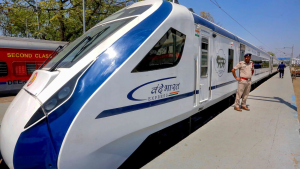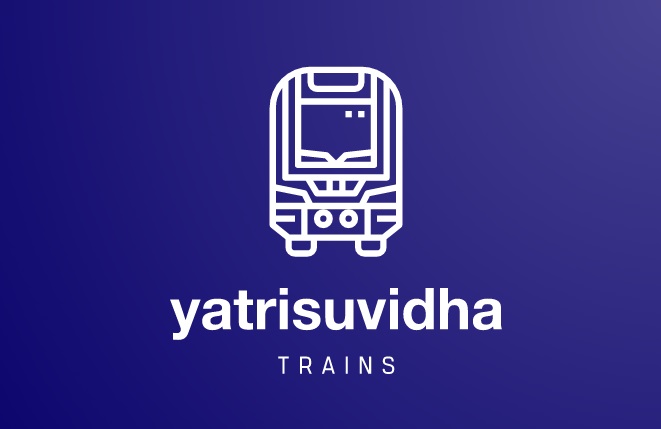
The Vande Bharat Express is a high-speed, medium-distance train service managed by Indian Railways. It operates as a fully reserved, air-conditioned chair car service that connects cities within 800 kilometers (500 miles) or roughly a ten-hour journey. Part of India’s ‘Make in India’ campaign, this advanced train service officially started on February 15, 2019.
Manufactured by the Integral Coach Factory (ICF) in Chennai, these trainsets are self-propelled Electric Multiple Units (EMUs) available in configurations of eight or sixteen coaches. Initially dubbed “Train 18,” the Vande Bharat trains reached trial speeds of 183 km/h (114 mph), though their operational limit is set at 160 km/h (99 mph) on selected routes, such as the Rani Kamalapati–Hazrat Nizamuddin and Hazrat Nizamuddin-Khajuraho routes, especially over the Tughlakabad–Agra stretch.
Indian Railways’ journey towards high-speed rail began as early as the 1960s, with initial targets set at speeds of 160 km/h (99 mph). Over time, innovations included introducing Rajdhani and Shatabdi Express trains, which operated at enhanced speeds, followed by further advances like the Gatimaan Express in 2016. This paved the way for developing indigenous semi-high-speed trainsets under the Make in India initiative. Foreign collaborations didn’t materialize due to technical challenges, prompting the development of the locally-designed Train 18, which eventually evolved into Vande Bharat.
Prime Minister Narendra Modi inaugurated the first Vande Bharat service between New Delhi and Varanasi in February 2019. The 759 km (472 mi) route was completed in about 8 hours, reducing travel time by approximately 15%. This success was followed by additional routes, such as New Delhi to Katra later that year. Production paused briefly but resumed in 2022, introducing a second generation of Vande Bharat trains, which are expected to eventually replace the Shatabdi Express on similar short-distance routes. In 2023, ICF began working on a sleeper version of Vande Bharat for long-distance journeys, with plans for thousands more trains by 2047.
The Vande Bharat’s structure includes either sixteen or eight coaches, with a 392-tonne sixteen-car trainset costing around ₹115 crore (US$14 million). Each trainset has two Driving Trailer Coaches on either end, four pantograph-equipped coaches, eight motor coaches, and other specialized carriages. During trials, the trains showcased impressive acceleration, reaching 100 km/h (62 mph) in just 52 seconds. Track limitations restrict operational speeds, but the trains still reach their peak of 160 km/h (99 mph) on some segments.
Passenger options include two seating classes: the premium AC Executive Class and the AC Chair Class. Executive Class seats 52 passengers in a rotating 2×2 layout, while Chair Class seats 78 passengers per coach with a 2×3 layout. Amenities include air conditioning, retractable seats, electric outlets, reading lights, CCTV, automated doors, bio-vacuum toilets, sensor-based taps, and onboard catering, with both vegetarian and non-vegetarian meal options included in the fare.
By December 2023, around 35 Vande Bharat trains were operational. As of October 8, 2024, the fleet had grown to 66 trains, comprising a mix of sixteen-car, twenty-car, and eight-car services, establishing the Vande Bharat Express as a premier travel option across India’s rail network.

Leave a Reply